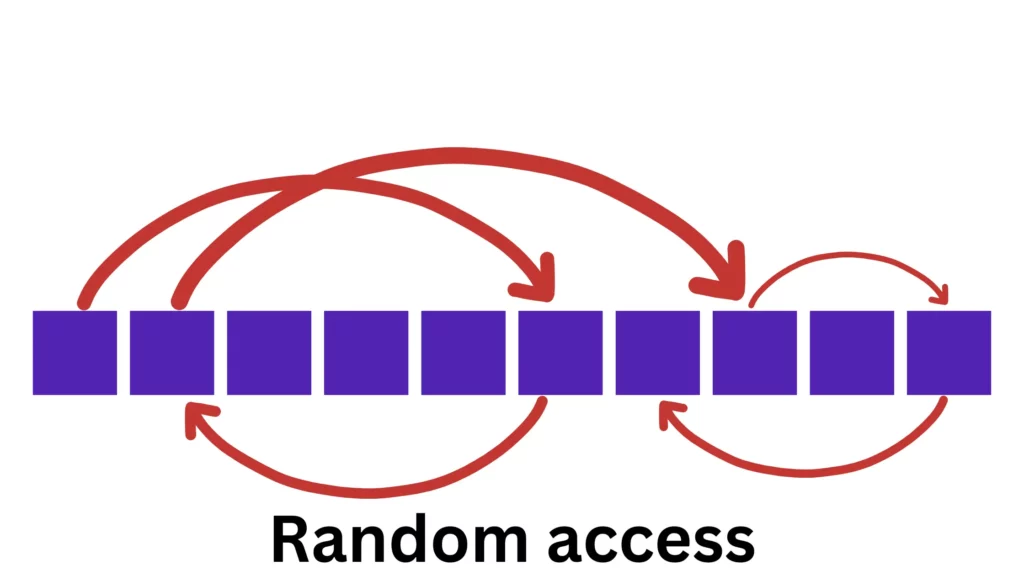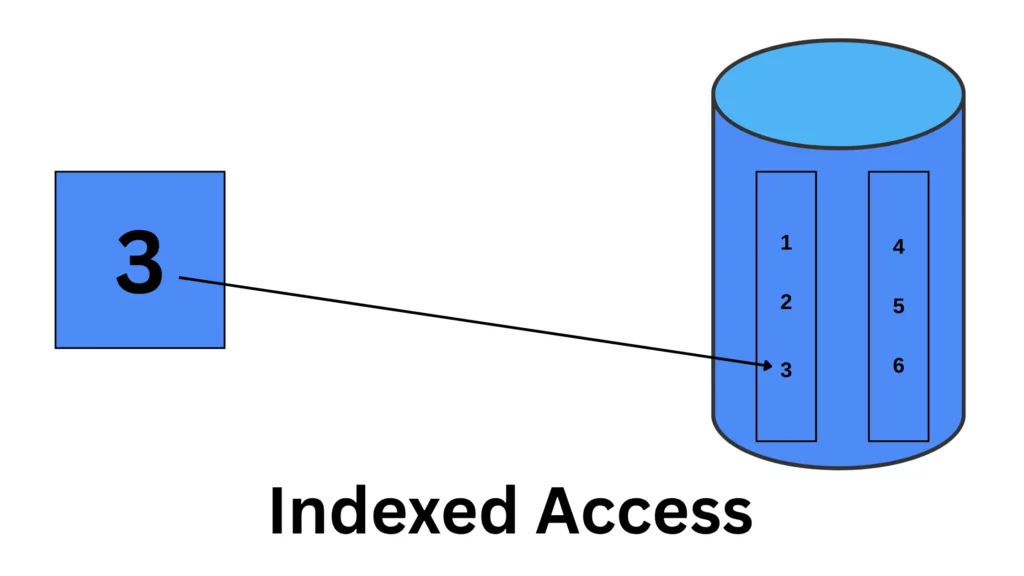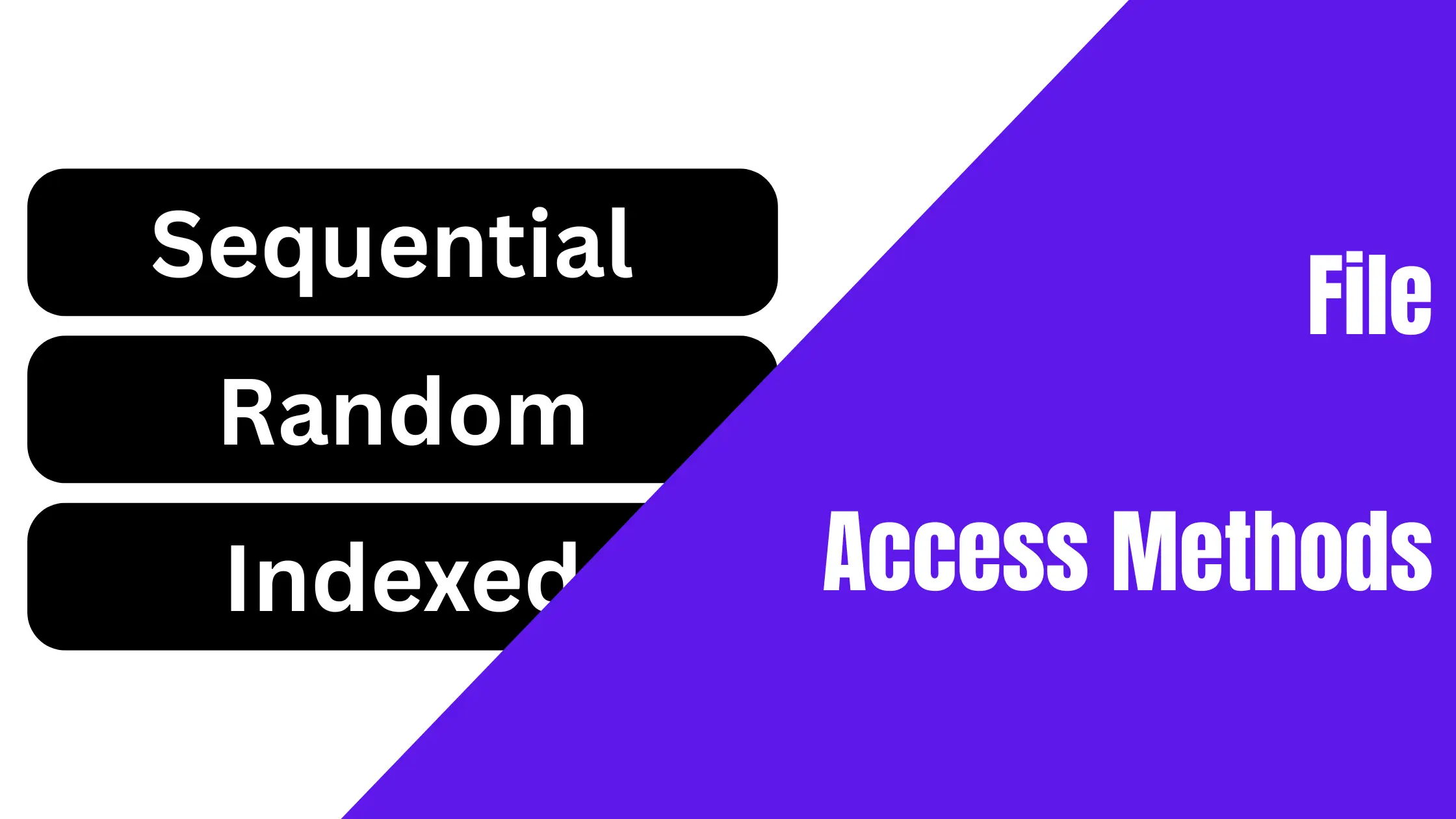Last updated on July 20th, 2025 at 06:35 pm

File access methods refer to the techniques used to read or write data to and from any file in a computer system. Let’s look at this like reading a book. If it is a story book, you would typically read it from front to back. This type of file access method is referred to as sequential access. For an address book with labels sticking out marked from A to Z, you would pick the letter representing the name you are looking for; this is direct access (random access). IN this article we will explore:
- What is sequential access;
- What is direct or random access;
- What is indexed access;
- Advantages of sequential access;
- Disadvantages of sequential access;
- The advantages of direct access;
- Direct access disadvantages;
- The advantages of indexed access; and
- Disadvantages of indexed access.
What is sequential access?
Sequential access refers to a file access method that allows you to access data in a linear or sequential order. Using this method, the system would read the document word by word from the beginning to the end while progressing in the order of the data’s placement.
One storage device that is read in this manner is the magnetic tape. This means that the device reading the information needs to move through all of the data from the beginning and in order until it gets to the point where the data is located.

What is direct access?
Direct access allows users to access whatever files they are looking for immediately without having to use the linear approach. The flash drive is one example of a device that reads and writes using direct access.
With a flash drive, you can see all of the documents located on it immediately, and by clicking the required document, you can open the correct one. This is direct access (random access).
What is random access?
Random access is the ability to access any element in a sequence or dataset, either directly or efficiently, without traversing preceding elements.

What is Indexed Access
Indexed access allows you to access information using a key. This is the equivalent of how someone can pull up your information from among thousands on a computer using your ID number.
Databases typically use indexed access. If you have ever created files using primary keys, you know that primary keys allow you to access a specific file without needing to go through or view everything in the tables.
Primary keys are unique keys that allow you to access all the related data in the database.

The advantages of sequential access
The sequential access method reads and writes data in a linear order. Here are some of the main advantages of sequential access:
- Simplicity: This shows that sequential access is simple, easy to use, and understandable, making it extremely suitable for applications that need to be processed in a linear sequence.
- Lower resource usage: Sequential access is not very complex and does not require a lot of resources to function, thereby reducing the cost of resources.
- Efficiency in certain applications: Smooth and efficient processing of data that needs to be read or written in linear order.
- Reduced risk of data fragmentation: Because data will be accessed sequentially, this reduces the chance of data fragmentation, which will improve overall system performance and reduce maintenance time for tasks like defragging.
The disadvantages of sequential access
Sequential access, while simple and efficient has various disadvantages, some of which are:
- Inflexibility: Flexibility is lacking in the data management area of sequential access.
- Limited use cases: Sequential access is often inefficient for interactive systems.
- Wasted storage space: In fixed block allocation systems, if records vary in length, there will be wasted storage space. This is space that has not been used by records but cannot be utilized by other data.
- Inefficiency for random access: Sequential access is highly inefficient for times when data needs to be accessed quickly. This is due to the fact that a sequential search has to be carried out to find the necessary data instead of jumping straight to the required point.
- Slow access times: Accessing data in a sequential system is time-consuming because the information must be searched thoroughly before it arrives at the required storage location.
The advantages of direct access
Direct access allows data to be accessed directly; it is also known as random access. The advantages of direct access are speed and efficiency. This is better for retrieving an individual file and flexibility.
The disadvantages of direct access
While information retrieval is fast in direct access, there are also disadvantages to it, some of which are its complexity, Backup complexity, memory overhead, data integrity issues, and security vulnerabilities.
The advantages of indexed access
Indexed access is great in that it allows for faster retrieval than sequential access when random lookups are required. When implemented correctly, its retrieval can also be faster than the direct access method.
The disadvantages of random access
The most significant disadvantage of indexed access is that it is time-consuming to create. This is because of the need to create an index. It can also be slower than direct access for some operations.
Understand that random, direct, and indexed file access methods are all in use. While one may seem to have more merit than another, they are all great choices depending on their use cases.
Before you go
Each of these file access methods has its place in the effective use of computing devices. Your choice of any one should be guided by your use case and the resources available.
 Skip to content
Skip to content 